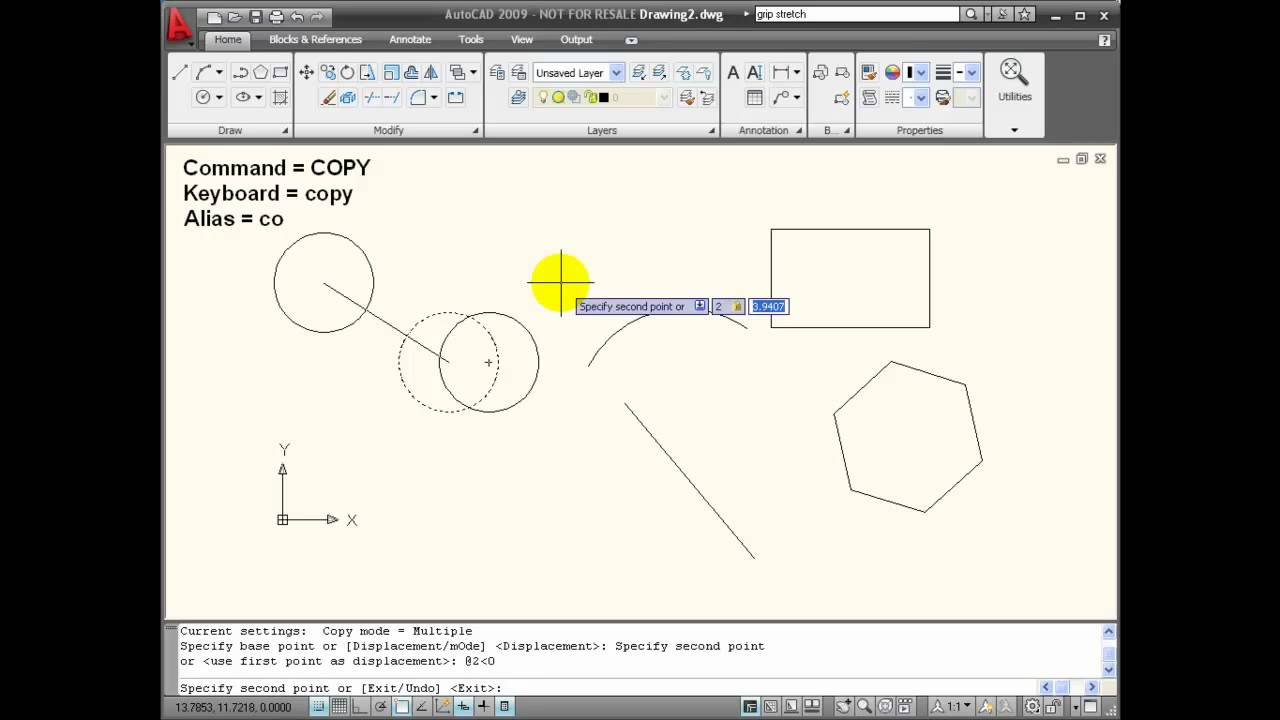
AutoCAD, the industry-standard computer-aided design (CAD) software developed by Autodesk, offers a vast array of tools and commands for creating precise and detailed drawings. Among these tools, the COPY command stands out as a fundamental feature for duplicating objects within a drawing. In this comprehensive guide, we delve deep into the intricacies of using the COPY command in AutoCAD, exploring various methods, techniques, and best practices for optimal utilization.
Understanding the COPY Command in AutoCAD:
The COPY command in AutoCAD allows users to duplicate one or more objects within a drawing. It is a versatile tool that enables designers and drafters to replicate objects with precision, facilitating the creation of symmetrical layouts, repeated patterns, and multiple instances of the same object. The COPY command offers various options for specifying the base point, destination point, and number of copies, providing flexibility and control over the copying process.
Using the COPY Command:
AutoCAD offers multiple methods for using the COPY command to duplicate objects in drawings:
1. Command Line Input:
The most straightforward method for using the COPY command is through command line input. To duplicate objects using the command line, follow these steps:
- Type “COPY” in the command line and press Enter to activate the COPY command.
- Select the objects you want to copy by clicking on them or selecting them from the drawing area.
- Specify the base point for the copy operation by clicking in the drawing area or entering coordinates manually.
- Specify the destination point for the copied objects by clicking in the drawing area or entering coordinates manually.
- Optionally, specify additional options such as the number of copies, displacement distance, and rotation angle.
- Press Enter to complete the copy operation.
2. Ribbon Interface:
AutoCAD’s Ribbon interface provides a graphical user interface for accessing commands and tools. To use the COPY command from the Ribbon interface, follow these steps:
- Navigate to the Home tab on the Ribbon.
- Click on the Modify panel to expand it.
- Click on the Copy icon to activate the COPY command.
- Select the objects you want to copy and specify the base point and destination point using the options provided in the Ribbon interface.
- Optionally, specify additional options such as the number of copies, displacement distance, and rotation angle.
- Click OK or press Enter to complete the copy operation.
3. Toolbar or Tool Palette:
Users can also access the COPY command from toolbars or tool palettes for quick access and convenience. Simply click on the Copy tool icon in the toolbar or tool palette to activate the COPY command and follow the prompts to duplicate objects.
Key COPY Command Options:
When using the COPY command in AutoCAD, users can specify various options and parameters to customize the copy operation according to their requirements. Key options include:
- Base Point: Specify the base point for the copy operation, determining the reference point from which the copied objects are displaced.
- Destination Point: Specify the destination point for the copied objects, determining the final position of the duplicates relative to the base point.
- Number of Copies: Specify the number of copies to create, allowing for the replication of objects in a desired quantity.
- Displacement Distance: Specify the distance and direction for displacing the copies from the base point, enabling precise positioning and alignment.
- Rotation Angle: Specify the rotation angle for the copied objects, allowing for rotation around the base point or a specified axis.
Advanced Techniques:
In addition to basic copying methods, AutoCAD offers advanced techniques and tools for enhancing the COPY command and efficiency:
- Multiple Selection: Select multiple objects to copy simultaneously by using selection windows, crossing windows, or selection filters, streamlining the copying process for multiple objects.
- Array Copy: Use the ARRAY command in conjunction with the COPY command to create arrays of duplicated objects, enabling the creation of symmetrical layouts and repeated patterns.
- Dynamic Input: Enable dynamic input mode to specify copy distances and angles directly in the drawing area, providing real-time feedback and control over the copy operation.
- Object Snaps: Utilize object snaps to accurately specify base points and destination points for copy operations, ensuring precise alignment and positioning of duplicated objects.
Best Practices:
To achieve optimal results when using the COPY command in AutoCAD, it’s essential to adhere to the following best practices:
- Plan and Preview: Before copying objects, carefully plan the desired arrangement and layout, considering factors such as spacing, alignment, and orientation.
- Use Consistent Parameters: Maintain consistency in copy parameters such as base points, destination points, and spacing to ensure uniformity and visual coherence in the drawing.
- Optimize Object Selection: Select objects efficiently for copying by using selection sets, filters, or object grouping, streamlining the copy operation and minimizing errors.
- Review and Verify: Review copied objects for accuracy and completeness before finalizing drawings, verifying positions, orientations, and quantities to ensure compliance with design specifications.
Conclusion:
In conclusion, mastering the COPY command in AutoCAD empowers designers and drafters to duplicate objects with precision and efficiency. By understanding the various methods, options, and best practices for using the COPY command, users can replicate objects with ease, facilitating the creation of symmetrical layouts, repeated patterns, and multiple instances of the same object. With AutoCAD’s versatile tools and features, designers can achieve efficient copying operations and enhance productivity in their drawings and designs.